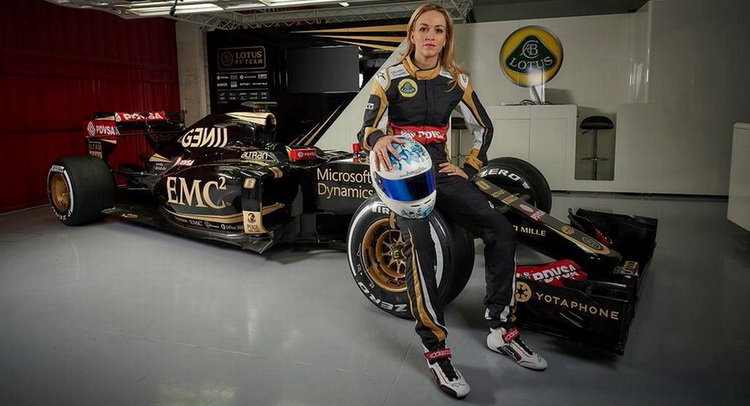The pinnacle of motorsports is, undoubtedly, a male-dominated field. Since 1950, when Formula 1 was established, only five women have managed to enter one Grand Prix; an abysmal number by any standards.
In fact, just two have been fast enough to qualify for a race – both of them Italian. Maria Teresa de Filippis signed up for five races in 1958 and 1959 but managed to qualify only in two of them. After 15 years without a female presence, Lella Lombardi competed from 1974 to 1976, with 12 starts out of 17 events.
Lombardi also has the distinction of being the only woman ever in the history of Formula 1 to score points, after finishing sixth at the 1975 Spanish Grand Prix. Davina Galica, Desire Wilson and Giovanna Amati also tried but never got to sit on the starting grid.
Recently, though, ladies have started appearing in racing overalls, albeit as test drivers. In 2012, Williams hired Susie Wolff and Marussia did the same with Maria de Villota who, tragically, died one year later due to complications caused by an earlier accident.
The latest arrival is Carmen Jorda, a 27-year-old Spaniard who has raced in the European F3 Open, Le Mans and Indy Lights series and this year has been signed by Lotus as a development driver. Paradoxically, she came under fire not by her male colleagues but the four-time WRC winner, and current head of the FIA Women in Motorsport Commision, Michelle Mouton.
“If I would suggest names of female drivers who have what it takes to make it to F1, I’d say Simona de Silvestro, Danica Patrick, Susie Wolff or even Beitske Visser, who is performing well in the Formula Renault 3.5 series”, said Moutton who believes Jorda hasn’t had the results that would justify her hiring.
Formula 1 mastermind Bernie Ecclestone, though, thinks otherwise: “She is very good, she wants to be in F1 and she’s prepared to give up what it takes”, he told Motorsport. “We asked Lotus to see and she has done a good job for them.”
It’s not just Jorda, though, Ecclestone is rooting for. “I saw the American girl, Danica Patrick (currently racing in NASCAR), and I said we would be able to do something for IndyCar driver Simona de Silvestro, but they don’t want to come to Europe; they want to stay in America”, he quipped.
Sure, his motive is reaching out to a broader audience and increasing the sports revenue. A young, good-looking woman would stand out amidst all the male drivers and make the media take notice.
Ecclestone’s money-driven approach doesn’t mean that women are in any way not good enough for the sport. Perhaps there are not that many who are interested, in stark contrast to the thousands of young guns who hope to become the next F1 champion.
That’s something even the 84-year-old Brit concedes: “You have Miss World. It doesn’t mean she is the best looking girl in the world. It means she is the best one who has been in the competition. So we need to find out who else is out there.”



